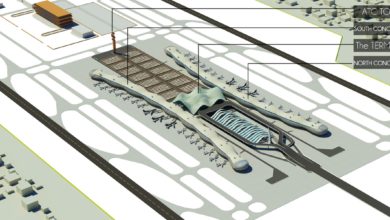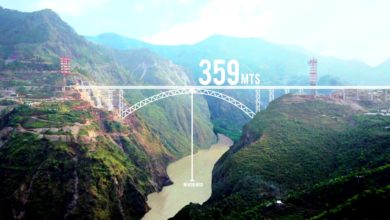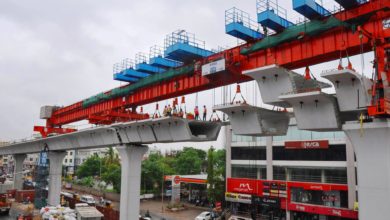INCREASED FOCUS ON DIGITALIZATION AND INCREASED MECHANIZATION TO ENHANCE EFFICIENCIES
S N SUBRAHMANYAN Chief Executive Officer of Larsen & Toubro.

Let us know about your expert opinion on the Indian infra market’s current situation.
The impact of COVID-19 and the resultant lockdown has been unprecedented; it brought all life to a standstill in the country and naturally there has been a drastic dip in economic activity. Neither the infrastructure sector nor Larsen & Toubro were pandemic proof yet we were still able to book INR 23,000+ crores of orders and clock INR 22,000+ crores of revenue in the quarter revealing that we continued to function albeit with our eyes, hands and legs tied. The bourses have reacted positively to our performance that holds hope for the sector at large. There are challenges of funding, opportunities, labor, supply chain disruptions, new functioning norms, the plethora of precautionary measures to be followed and such like but we are already seeing green shoots and the tide should hopefully turn favorable in the next quarter or so.
Tell us about the growth challenges which the overall infrastructure industry is facing progressively for the year 2020; and what is your positive strategy to combat the crisis of labour to finance for your business plans?
Funding: Most infrastructure development in recent times have been government funded and with their attention presently focused on social measures to offset the impact of the pandemic, a drop in funding is only to be expected. However, the onus is on the government to create jobs, to put more money in the hands of the people, to revive consumption and thereby stimulate economic growth and hence we, at L&T, are cautiously optimistic that government funding will resume. We are however not so confident of private funding reviving that could take a year or so more. Prior to the lockdown, the Finance Minister had launched the National Infrastructure Pipeline with a total commitment of INR 102 trillion identifying some 23 sectors. We are optimistic that some of these will fructify to boost the economy and the sector. In any case, with 300+ million people dependent on the construction industry for their livelihood, it will remain a sector of prime interest for the government.
Labour is the other major challenge that we must tackle. Labour returning to their native places is not new for the industry as they do so every year during the festival and harvest seasons but that they have returned in such large numbers post the relaxation of the lockdown has been cause for worry. We are seeing a ‘reverse migration’ and almost daily 1,000-1,500 people are re-joining our workforce which augurs well.
Geography: In India, we await the revival of central government and multi-lateral funded (like from JICA, ADB, World Bank, etc.) projects in the EPC space for heavy civil, power transmission & distribution and water infrastructure. The revival of the Middle East market depends to a large extent on the stabilization of the crude oil prices and there are already positive signs in that direction which should open opportunities in the power, solar and water infrastructure sectors. Africa is the other geography of potential which should also see increasing multi-lateral funded projects especially in North and East Africa where we are present.
COVID-19: Obviously, the pandemic itself remains a huge challenge and until a vaccine or cure is found, things will continue the way they are at present and we will need to learn to live with COVID-19 and succeed despite it.
What is your forecast for the period of 2020-2022? Do you think that the Indian market can plan out an exit from the challenges and draw some intensive successful movements for doing business activities?
From our perspective, against the backdrop of an intractable business environment, we have been pursuing a multi-pronged strategy to weather the economic crisis and restore normalcy in business operations, while complying with all governmental directives and measures to ensure the safety of our customers, employees and workmen. We are constantly monitoring labor availability and productivity, working capital levels, balance sheet health and pick-up in the pace of execution pace. Our focus continues to be on responsible resumption, profitable execution of our large order backlog with higher operational efficiencies, liquidity management, tight expense control and successful transitioning to a new work environment.
A positive fallout of the pandemic has been our increased focus on digitalization and increased mechanization to enhance efficiencies and reduce dependence on manpower. In fact, it has hastened our transition from a pure engineering and construction company to a technologically enabled one. Today there are over 50 digital solutions in production and widely used by thousands of our operating staff at hundreds of project sites. Every single project site has a slew of digital solutions with over 11,000 ‘connected’ construction equipment providing real-time visibility into the operations that has enabled improvements in productivity & utilization, better maintenance and uptime, better fuel efficiency all leading to faster completion of work and savings in costs. As this process gains more ground, we will transform into a more agile, leaner and lighter organization.






